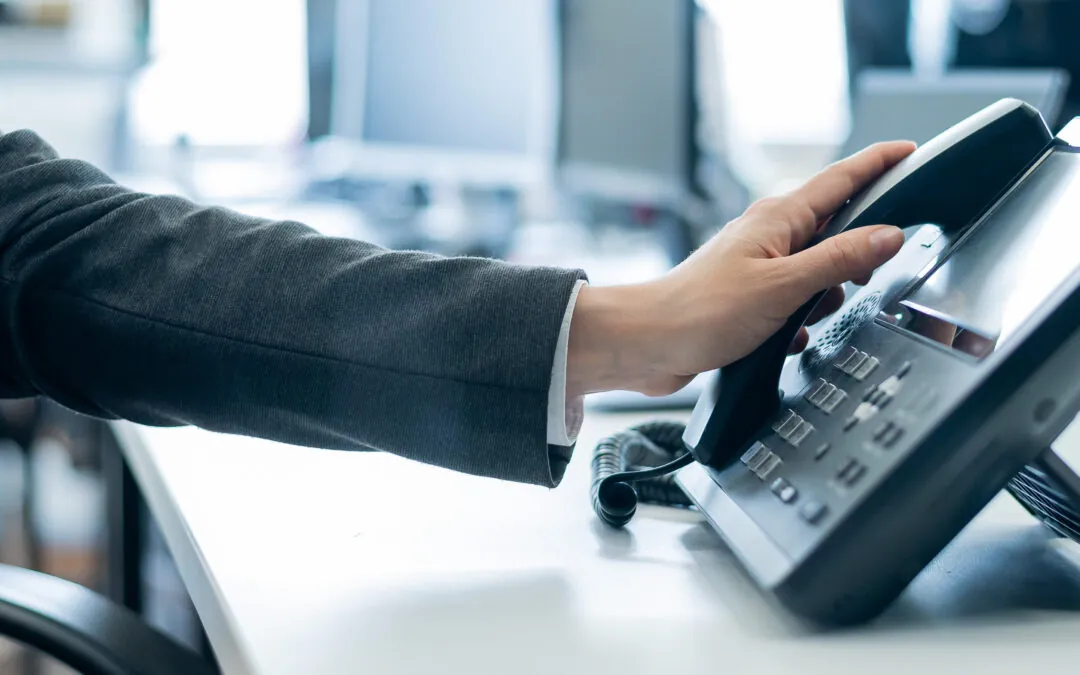Your business phone numbers
Business phone numbers are an essential part of your business brand and identity. Repeat customers have the number saved. They’re stored across all your marketing materials and your website. It’s an essential asset for most UK businesses. However, many are unaware that their business phone numbers are at risk because of the upcoming PSTN switch-off.
The UK is retiring legacy Public Switched Telephone Network (PSTN) in 2025 and replacing it with new digital technology, like VoIP (Voice over Internet Protocol). The upcoming change means that business numbers, a critical asset for most, could be lost if action isn’t taken sooner rather than later. In this short guide, we explain how to protect your business phone numbers, why it’s important, and what could happen if you leave it until the last minute.
What is the PSTN switch-off?
Let’s start here, what is the PSTN switch-off and how does it relate to business phone numbers? Well by 2025, the UK will stop using the old analogue phone lines and migrate to a new all-IP service. This move to digital communications, like using VoIP services, is better overall because it’s scalable and more efficient to manage. However, millions of UK businesses still have telephony services, and therefore related business phone numbers, connected to this legacy network. You can learn more about the PSTN switch-off’s wider impact in this guide.
What happens if I don’t keep my business phone number?
Your business phone number is a critical part of your business identity. It’s on your business cards, website, social media profiles, and adverts (and maybe your very own catchy TV/radio jingles). Losing it can confuse customers, hurt your business image, and cause other problems such as:
- Loss of calls and connectivity: If you don’t migrate to digital communications in good time, customers might not be able to call you. As a result, there could be a period where your business might not be reachable via the already-established phone number.
- Losing customers: Customers might go to a competitor if they experience inconvenience or a difficult buying journey when trying to contact your business.
- Increased and unexpected costs: Changing your phone number means updating marketing materials, your website and digital presence and more, which is going to be time-consuming and costly.
Take steps to keep your business phone number
With all the above risks considered, it’s clear that taking steps to keep your business phone number is a worthwhile exercise to save you hassle and protect your numbers.
- Check Your Current Setup – Review what technology you use for your business communications. If any of those services are connected to the old PSTN, which can include things like alarms and door systems, you’ll need to get that migrated to a new service.
- Pick a Provider – An experienced vendor, like Gradwell, can make the move seamless and support migration of connectivity, voice services and porting so that you can keep your business phone number that customers already know.
- Plan Your Move – Work with your selected provider to plan out the transition and ensure there is no downtime or loss of service. Communicate these changes to each department in your business and prepare for any training needed for new services, like VoIP, that you put in place.
- Port Your Business Phone Number – Consider when the number porting process will start, which involves transferring your phone number to the new VoIP system. Make sure your selected provider can manage this process for you.
- Test the New System – Once your number is ported to the new system, take the time to test everything to ensure inbound and outbound calls work as usual and eliminate any risk of lost connections.
Why you need to be proactive now
Moving off PSTN services is not just upgrading; it’s necessary for keeping your business online and keeping your business phone number. Whilst yours may not be quite as memorable as 118 or 1066, its still an essential asset that you need to protect as the switch-off picks up pace this year.
Remember, the move to all-IP communications is unavoidable. Don’t let the PSTN switch-off disconnect you from your customers or mean you either temporarily, or permanently lose your well-established numbers. Speak to us today to find out how we can help you have a hassle-free transition and maintain one of your most valuable business assets.
PSTN Switch-off Guide
Click below to learn more about the impact of the PSTN switch-off and what you need to action for your business


